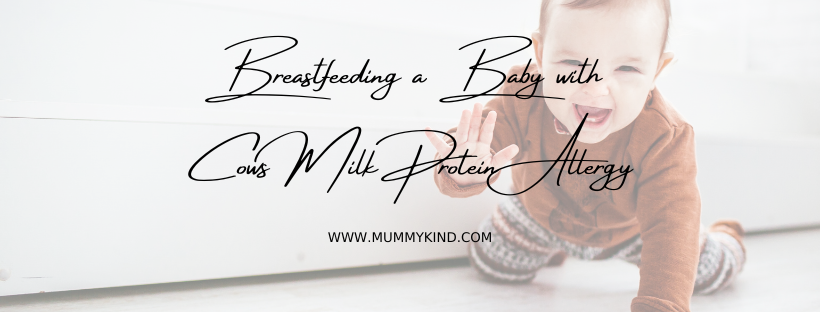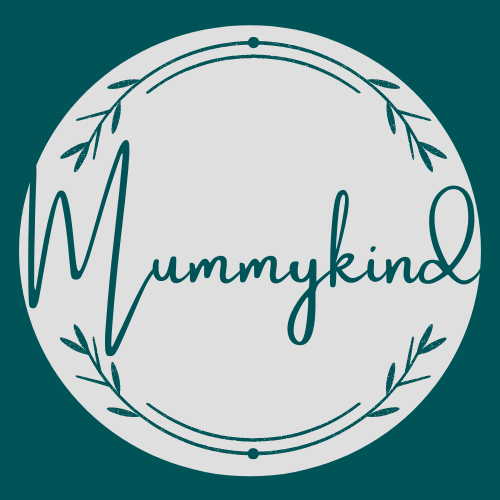
Breastfeeding a CMPA baby
My breastfeeding journey wasn’t the smoothest anyway, so when we realised baby number two had CMPA – Cow’s Milk Protein Allergy – just like the first, we just sighed and went about our business. As a family we are largely dairy free anyway, we don’t tend to have many dairy products in the house, so cutting it from my diet was easy from a practical sense but there some things from the top shelf that I miss.
Knowing the risk from day one
Knowing that there was a risk of CMPA when was pregnant with my daughter I considered going dairy free before she arrived and slowly reintroducing once breastfeeding was established. After a false start to labour and believing (for several weeks) that baby would arrive any day it just… didn’t happen. I decided, instead, to go low dairy. For people familiar with CMPA this will make sense – I stayed below cheese on the milk ladder. For others; the milk ladder is the framework for the reintroduction of dairy in allergic individuals. Melted cheese is around half way up. I even wrote in my birth plan that, if I was separated from my baby, she was not to receive cows milk formula because of the risk. She would need to be given hydrolyzed formula (this means the proteins have been broken down).
Not everybody knows the risks, especially if it is their first baby. You can’t possibly prepare for everything, and familial history is hard to know, because a lot of CMPA babies even 10 or more years ago were just called ‘sicky’ or ‘colicky’ with no further investigation.
Discovering CMPA in a breastfed baby
My daughter was struggling to gain weight, we initially thought this was all down to her tongue tie but even after that was corrected she was dropping centiles. She was having more dirty nappies than you would expect for a baby her age… The poo was watery and sometimes green well after the meconium was gone. I had my suspicions but a bout of “baby acne” had me on high alert.

I actually did something silly when she was a few weeks old. My family went out for dinner and got the chocolate brownie for desert without even considering that it would come with ice cream… and then I ate the ice cream. Later that day the little patch of “acne” on her cheek spread across her face and down her chest. I feel guilty for doing that but it confirmed my suspicions. That little ball of cheap ice cream was the last bit of dairy I consumed. That was over three years ago, at the time of publishing.
CMPA Diagnosis
When a baby has CMPA, there are a lot of symptoms that can cross over with other issues, so it can be easily missed. Because I was breastfeeding, diagnosis didn’t really matter to me – it isn’t like anyone could force me to consume dairy! With my oldest, we had to do a lot of convincing to get the doctor to prescribe the special formula. In that sense, breastfeeding was by far the easier option. As it happened, the wonderful IBCLC I was seeing fully agreed with me when I told her what I thought the rash was, and how bad the nappies were. Care was taken over by pediatrics at the local hospital for a different problem with her liver, and the diagnosis was formally recorded there.
Continuing to Breastfeed with CMPA
Quite often, when a baby is diagnosed with CMPA in the UK, their parents are given a prescription for formula and sent on their way. If the family is lucky, they go on a waiting list to see a dietitian. Often, there is pressure from HCPs to discontinue ‘contaminated’ breast milk for several weeks, which leads to an end to breastfeeding. This has a lot to do with the baby’s recovery time, which can be around four weeks. If their reaction is not severe, then it may be safe to continue without a break. If there is a risk of severe reaction then your milk should be clear in 24-48 hours. I am not a medical professional, and these time frames are estimated, so this should only be done under the guidance of a doctor or IBCLC.
Some people choose to stop breastfeeding when their child receives a CMPA diagnosis, which is also absolutely fine. It is your choice to make. The important thing to take away from this is that you have a choice about your own body and your baby.
Adjustments and Struggles
Coffee and cheese. Most of the time there are good dairy free alternatives to things. Some things are unexpectedly dairy free, usually supermarket value ranges using oil where you would expect butter. It is manageable, with a lot of reading when you shop. Coffee, however, takes no prisoners. and fake cheese… it doesn’t melt. You have to spend a bit of time finding something nice, that works for you. You’ll kiss some of the proverbial frogs along the way. I like Oatly Barista for my coffee, and Violife cheese is acceptable after a while. It’s okay, these are just little things, and it gets a lot easier with time. With the recent release of Cathedral City’s plant based cheese… well, if I’m honest, I cried.
Check out my post ‘7 Top Tips for Shopping with Food Allergies‘
Going Out
This has to be the hardest part, for me. It would be so lovely to be able to just go to a place and eat whatever I wanted off of the menu, but I can’t. I have a set few local places with decent allergy information and we rarely eat out. Picnics and pack ups are the order of the day most of the time. CMPA has made that part of life harder. Kids’ menus are often simple and easy to find dairy free items – sausage and chips with peas? Usually safe. The barbecue chicken melt that I want? Not a chance! And forget pudding, unless £5 for 2 scoops of sad sorbet is appealing.
Finishing Breastfeeding
A few weeks before her third birthday we started gently weaning off of bedtime booby – that was pretty much all we still did anyway. She would still ask every few days for a while, when she was sad or tired. Sometimes she was just bored! I noticed that my milk had dried up a couple of weeks after her birthday. I never had an abundant supply anyway, so I wasn’t shocked that the infrequent feedings had reduced it to nothing.
You would think that would mean I would be able to start consuming dairy again, but adult humans are not actually supposed to consume milk, biologically speaking. If you go long enough without consuming lactose (a sugar, not a protein!) your body will stop producing lactase. Lactase is the enzyme that breaks down the sugar, lactose. Lactose intolerance became a reality to me when I, rather foolishly, tried some pumped breast milk around the two year mark. Oops! Breast milk contains lactose, regardless of the mother’s diet.
What the future holds
My oldest child finally had extensive blood work done, and we are under medical advice to not attempt introducing dairy. My youngest had similar blood tests done and was given the go ahead to start the milk ladder. Since her last pediatrics appointment, she has had chicken pox, eczema flare ups, COVID-19 and then post COVID pneumonia requiring inhalers. Sadly, she has not been well enough to make a valid attempt this year, but I am hopeful for the coming months! For me, the reintroduction will be slow as well. Personally, I feel healthier having been dairy free all this time. I don’t think I will ever be able to (or want to) drink a glass of milk. I just want to be able to have a meal out and not worry too much. My goal is cheese, which seems pretty reasonable!

Can you breastfeed a baby with tongue tie? - Mummykind
[…] Breastfeeding a CMPA baby […]
My breastfeeding story - Mummykind
[…] Breastfeeding a CMPA baby […]
My ups and downs with baby led weaning - Mummykind
[…] Breastfeeding a CMPA baby […]